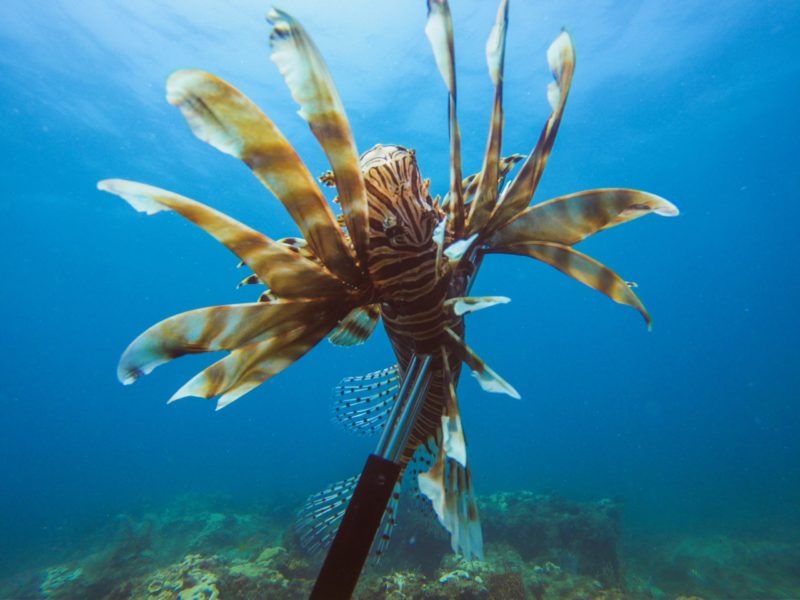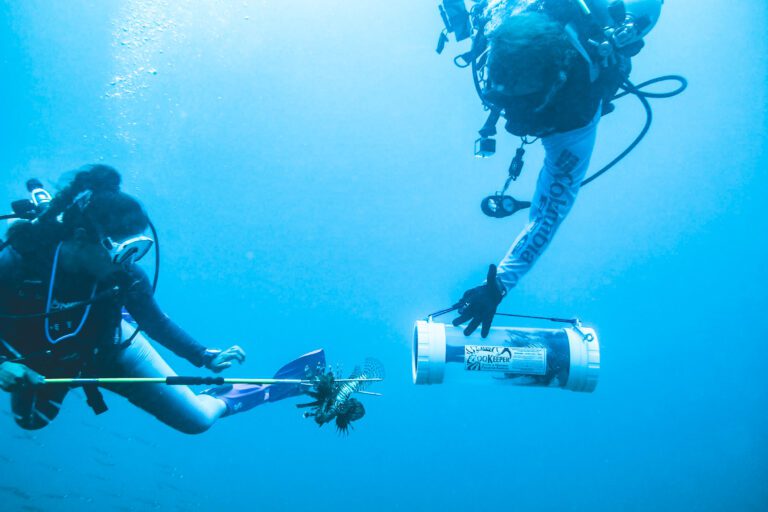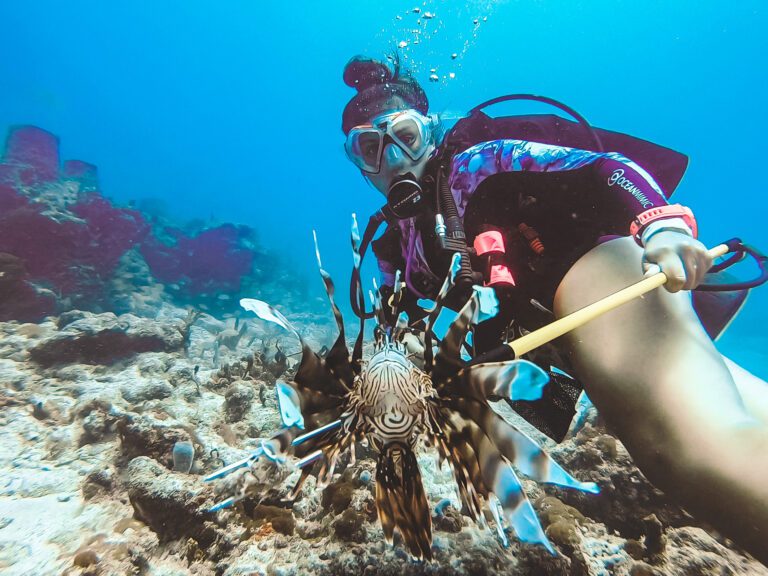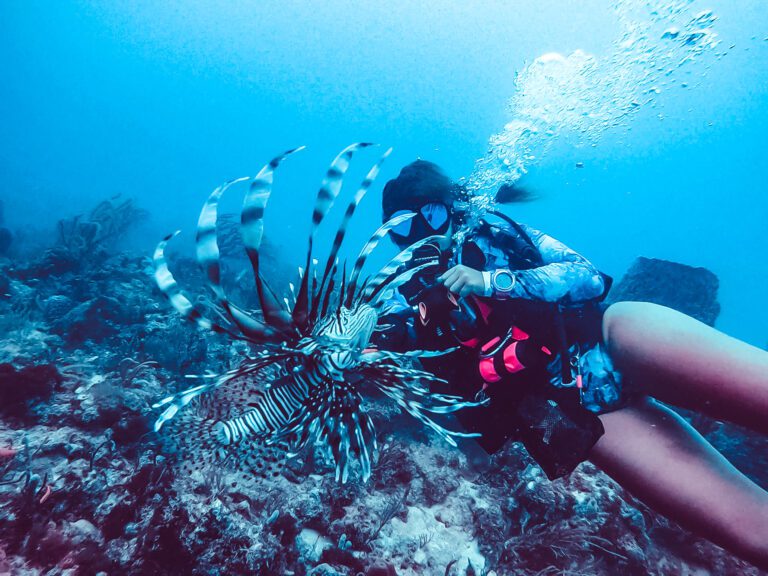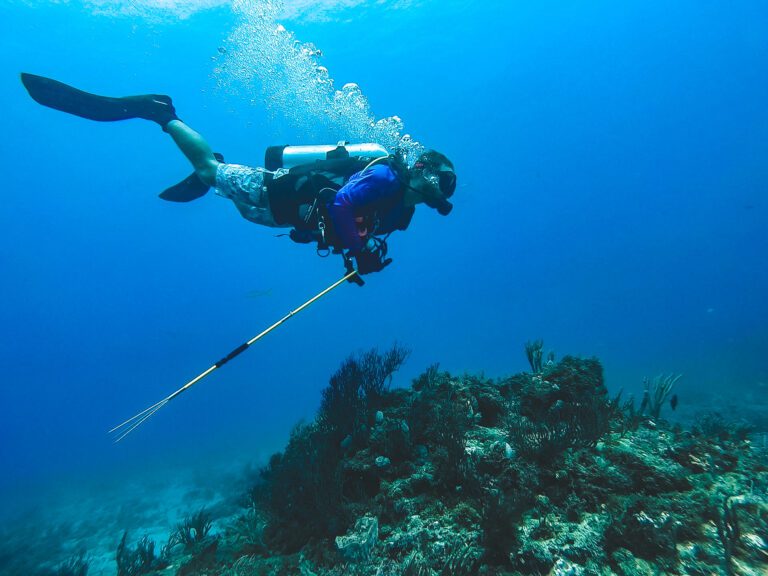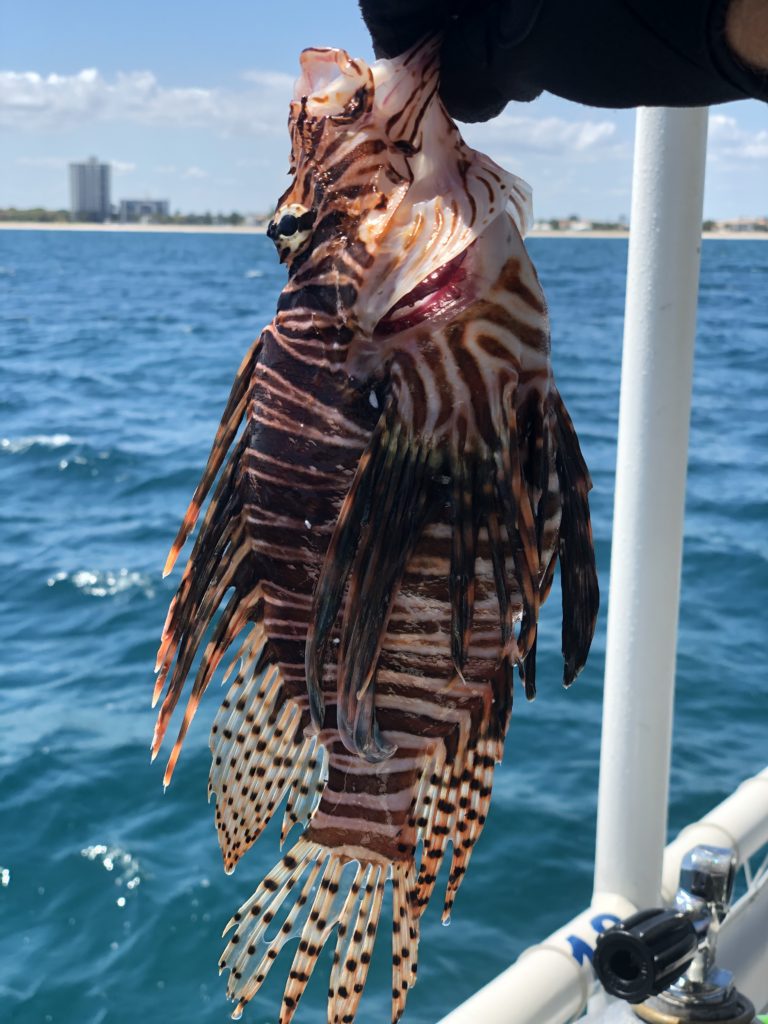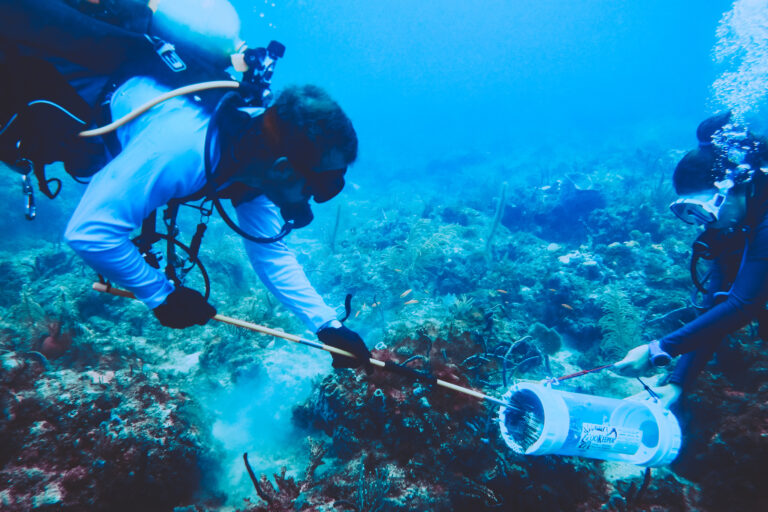11 Tips to Catch More Lionfish While Scuba Diving
Want to catch more lionfish during your dive? Follow these easy tips to step up your game!
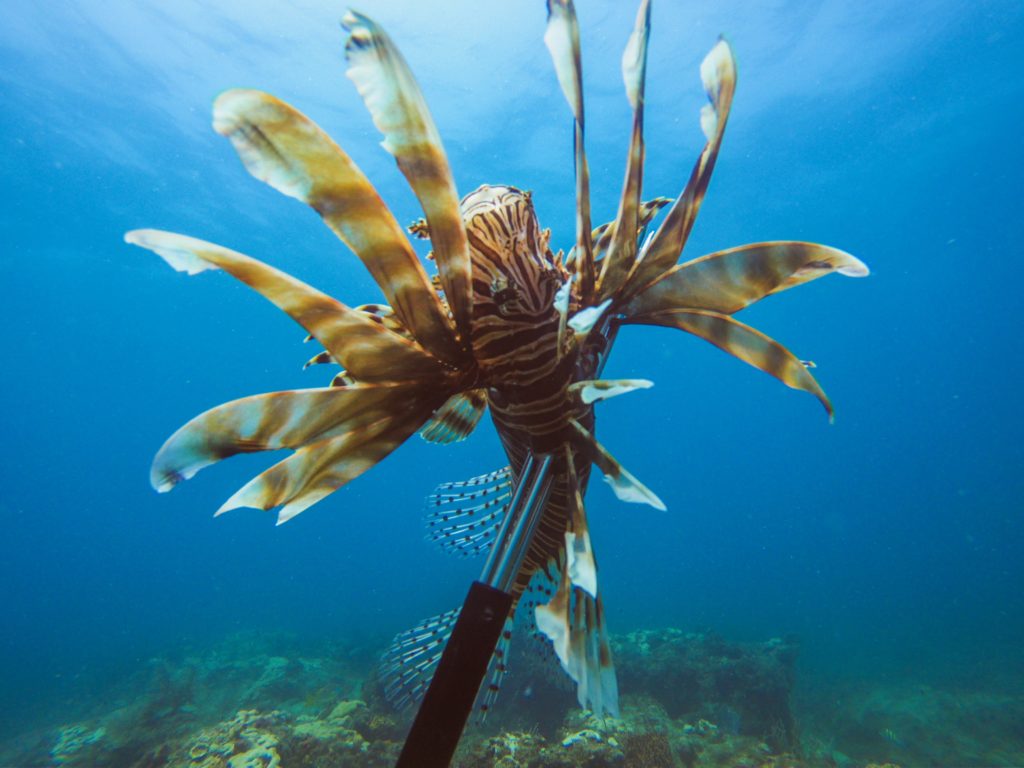
Tips to Catch More Lionfish During Your Dive
Given the nature of the lionfish invasion, I never thought I’d get to the point where I would go diving in South Florida and not find lionfish. But here we are.
It’s a good thing, truly, that from time to time we won’t find any lionfish on the reefs in Fort Lauderdale – largely due to so many people going out and hunting them! This is great! After all, they are invasive. But as a hunter? It’s not so good when you’re dinner can’t be found!
Or can it?
Hunting lionfish, particularly in a place like Fort Lauderdale, has forced me to be mindful on where to hunt, when to hunt, and how to hunt to increase my catch. By following these easy tips, we hope you can do the same. Our coral reefs are depending on it.
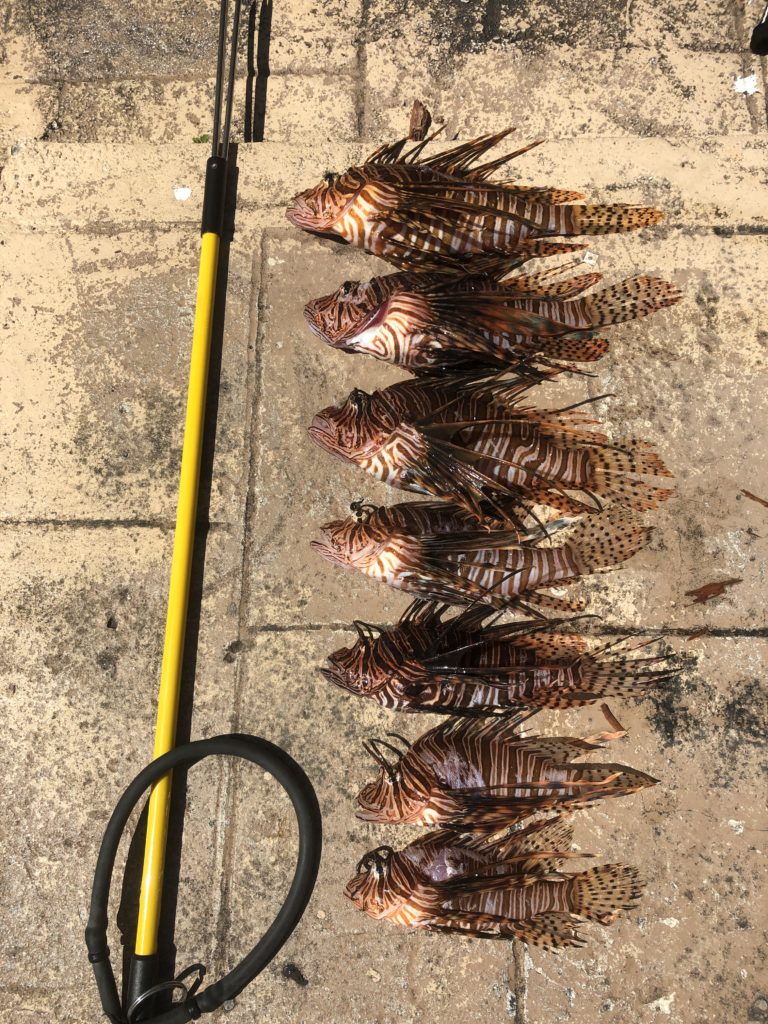
1. The best time to hunt lionfish is sunrise or sunset.
University of Miami marine scientist, Laura Palomino, says “lionfish are easier to spot at dawn and dusk because that’s when they’re actively swimming and hunting. This behavior is known as being crepuscular.”
This obviously isn’t feasible for everyone to dive during these hours. I mean, it’s not very likely your local dive shop is heading out at 6 AM. But if you do have the opportunity, surely you’ll increase your likelihood of removing more lionfish if you hunt at sunrise or sunset.
2. Larger lionfish are found in deeper water.
Mind-blowing fact: lionfish can live as deep as 1,000 feet beneath the surface! And the larger ones, for whatever reason, tend to gravitate into these deeper waters! A spillover effect occurs; smaller lionfish are pushed out and migrate to shallower reefs in search of more food.
Let’s just assume you won’t be diving down to 1,000 feet any time soon (maximum recreational limits are about 130 feet). However, the same spillover effect occurs within our recreational limits.
Select your dive sites carefully, the reefs and wrecks between 45 – 70 feet will likely be home to more lionfish (and larger ones) than the reefs between 20 – 30 feet.
3. You’ll be more likely to find lionfish in less traveled areas.
One of the most pristine ship wrecks in south Florida, Hog Heaven, is a diver’s paradise. Every dive shop in Fort Lauderdale visits the wreck to boaster the south Florida waters! Lots of traffic, lots of divers, lots of hunters. But few lionfish.
Believe me, it’s a great problem to have. But if you want to go hunting, ask your dive charter to bring you to more remote reefs/wrecks; you’ll likely catch more lionfish!
4. They tend to aggregate near artificial reefs.
Although we’re not entirely sure why, lionfish tend to aggregate around artificial reefs. What are artificial reefs?
Artificial reefs are solid structures underwater that were intentionally (or unintentionally) sunk to create a marine life habitat! The idea is to provide an attachment site for coral. Think ship wrecks or a pile of boulders.
Lionfish love these sorts of structures. So if you’re embarking on a hunt, start at an artificial reef.
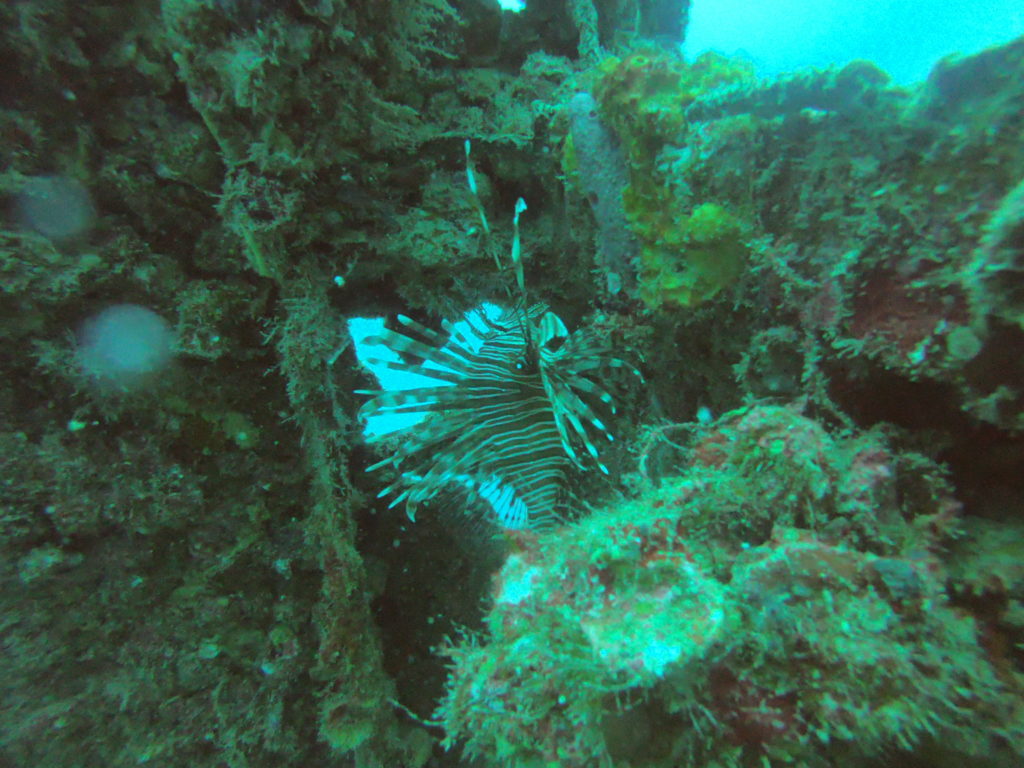
5. Catch more lionfish by swimming slow and in control.
You’re limited on air and the time is ticking. You want to cover as much ground as quickly as possible. The faster the better, right?
Not necessarily.
And I’m certainly guilty of this myself. Just ask my dive buddy, Laura. Think about it: you’re swiftly moving along only taking quick glimpses. How many lionfish do you think you’re overlooking? Quite a few. How much air are you unnecessarily blowing through? Quite a bit.
Taking your time, moving slow and in control is key to catching more lionfish. Certainly don’t move at a snails pace, though. But a tale called “The Tortoise and the Hare” comes to mind.
6. During the day, lionfish will often hide under ledges.
“When the sun is up, lionfish like to hide in crevices, oftentimes suspended upside down. So it’s important to look inside any overhangs or sheltered areas”, says marine scientist, Laura.
So if you’re at the mercy of the dive charter schedule (diving during the day), look under every rock and ledge, surely you’ll catch more lionfish!
7. Where you find one, you often find many.
It happens all the time. You’re swimming along and you finally notice the tips of a lionfish fin. You set your sights and you slowly approach. On your way to make your shot, you suddenly notice another lionfish. And another! And another! Wow! It’s almost like they hang out in groups.
They do!
You’ll catch more lionfish if you thoroughly search where one was found – there’s sure to be more hanging around the area.
8. Having the proper gear is crucial when hunting lionfish.
Quality lionfish hunting gear is crucial. Here are our recommendations:
Spear: most people use a pole spear between 3 and 4 feet in length with three prongs on the end. Our favorite, affordable pole spear can be found on Amazon.
Containment System: the best on the market, without question, is the Zookeeper. If you have the cash, it’s well worth it. However, we made our own for pennies on the dollar. Stay tuned for a future post on how to make it!
Gloves: handling lionfish is a delicate task due to their 18 venomous spines. Having an extra layer of protection over your hands is a must. Headhunter makes a solid pair of puncture resistant gloves designed for spearfishing.
Flashlight: how were you going to look under those dark ledges, cracks, and crevices anyway? Our favorite brand is Princeton Tec!
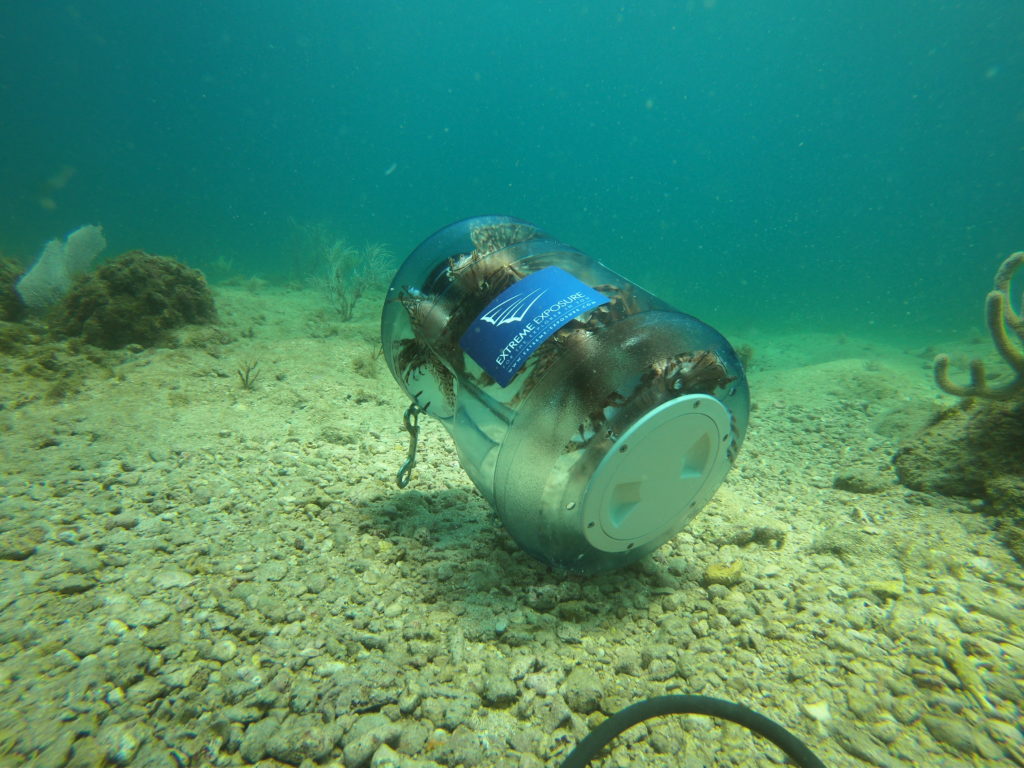
9. You’re able to get closer to lionfish than you think. Just approach slowly.
Lionfish have no natural predators in the western Atlantic and Caribbean – they’re not used to anything hunting them! This results in little to no reaction to humans!
I can’t even begin to tell you how many bad shots I’ve taken because I didn’t get near enough – thinking I’d spook them and figured I was “close enough”.
It’s difficult to remember in the moment, but keep it mind: approach slowly with no sudden movements. You’ll be surprised how close you can actually aim your spear!
10. Knowing where to aim when shooting a lionfish goes a long way.
I’ve read conflicting advice on this topic. Some publications recommend aiming for the body, some for the head. Us? We think there’s a sweet spot in the middle.
Lionfish skulls, particularly on the larger fish, are extremely thick. If your spear is dull it may have a difficult time puncturing. Or at the very least, discarding the lionfish into your containment system may prove difficult with a head shot as the spear will be stuck in the skull.
Our recommendation: aiming from the side, shoot slightly behind the head but not completely on the body as to not spoil any meat.
11. Increase your bottom time to catch more lionfish.
More bottom time = more time to hunt. I know what you’re thinking: “Duh! Who doesn’t want more bottom time?” We hear you.
But here are our top tips as it directly relates to lionfish hunting:
- Control your breath and excitement. It’s downright thrilling to go hunting and your air consumption will reflect that. Keeping calm and containing your excitement will not only conserve air, you’ll shoot straighter.
- Travel slow and in control (see above).
- Use your snorkel at the surface before you descend.
- Streamline the best you can! (although, containment systems aren’t exactly the easiest to move with).
Happy hunting, explorers!
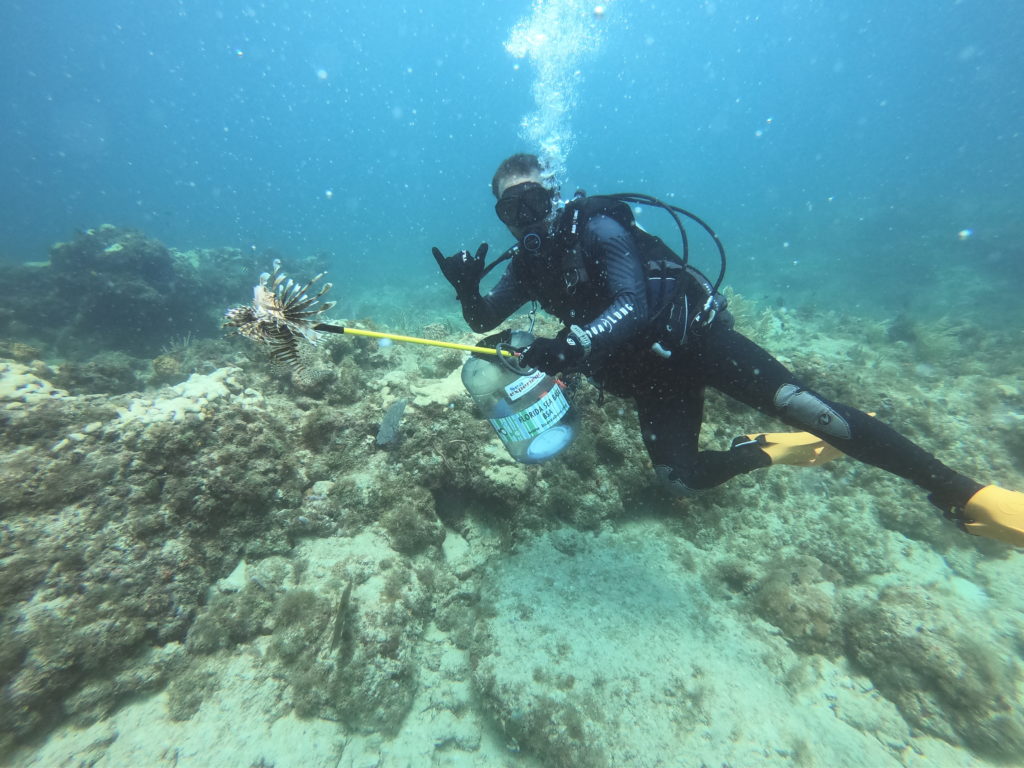
Enjoy this Post? Pin it!

Read More About Lionfish
We hope you enjoyed our article on tips to catch more lionfish. Hopefully you’ll find it useful on your next adventure! Here are a few more ocean-loving articles we think you should read next:
- 18 Facts You Should Know About Lionfish
- Complete Guide to Hunting Lionfish
- The Gear You Need to Hunt Lionfish
- The Need to Hunt Lionfish
Have any more tips or ways to increase your catch of lionfish? Leave a comment below!

